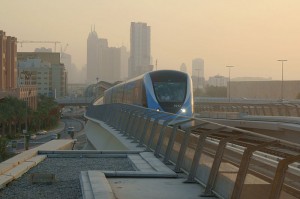By Suzanne Fenton, Staff Reporter www.gulfnews.com

“Rents need to go back to 2006 levels. There is a huge disparity between the different market segments in different areas and between lots of landowners and sellers over what the property is worth and what the tenants and buyers think.
“It is the tenants and buyers that are closer to reality. Landlords and sellers are not prepared to accept that prices have come down,” said Elaine Jones, chief executive of Asteco.
This has been a common issue in the market – a disagreement between the different parties as to the true value of the property.
The values of properties of good quality and situated in good locations have come down less than poor quality properties in bad locations.
Of course, the old adage of location, location, location remains true in Dubai, especially with the recent opening of the Dubai Metro. As with other cities, properties closer to stations will see their values shoot up.
“Those close to the stations, not just close to the Metro line. There you can expect the proximity of the station to add value to the property. That value diminishes as you move away from the station,” said J.P. Grobbelaar, director of Colliers International.
Close proximity is about 400 to 800 metres from the station.
“Prices have come down 45 to 50 per cent on average in Dubai. If they go [down] it will be a little further, we’re not in freefall anymore. They won’t go 10 to 20 per cent further,” said Markus Giebel, chief executive of Deyaar.
During the panel discussion it was generally agreed that the market was bottoming out although it has not necessarily hit rock bottom, especially in the commercial sector.
Charles Neil, chief financial officer of Landmark Properties, said that while the villa market may have hit bottom, it was a different story for apartments and the commercial sector.
Last quarter, villa prices rose seven per cent and rentals advanced by six per cent generally in the three and four-bed bracket, Neil said.
There could be a 20,000-apartment surplus this year. The figure could rise to 60,000 next year.
“We see apartments [prices and rents] coming down another three to four per cent and not levelling out until the end of next year. The biggest worry is commercial. Offices could fall up to 50 per cent in the future,” Neil said.
The fluctuating rents and property prices are heavily reliant on where the property is situated.
This makes it difficult to generalise. However, prices on the Palm Jumeirah have fallen by up to 56 per cent and prices are still falling at the Arabian Ranches.
Prices on the Dubai Marina are stabilising after having eased 40 per cent, according to Safeena Rangooni Lakdawala, senior manager for research at the Investment Boutique.
Those buyers who invested in apartments in 2005 are better off now than those who invested in villas. People who bought properties in 2008 have lost around 14 per cent on the value of villas and 13 per cent on apartments.
So apartments have been a better investment choice, Lakdawala said. The focus going forward will be on affordable properties to accommodate the vastly dominant middle class in Dubai. In the past, there was not much communication on who was building what.
“We need to replace the affordable properties in Karama and Mirdif that have been demolished and replaced by properties that don’t suit the need of the demographic,” Jones said.
Giebel called for concerted efforts to reduce the prices of available properties.
While recent market data shows prices and rents increasing, this was just a false recovery, Grobbelaar said.
“I don’t believe the market has bottomed out. We have a way to go before we see a substantiated recovery.
“Now there is a false recovery, people are talking the market up. There will be further declines in rentals and prices… The road to recovery will take a while,” Grobbelaar said.
















